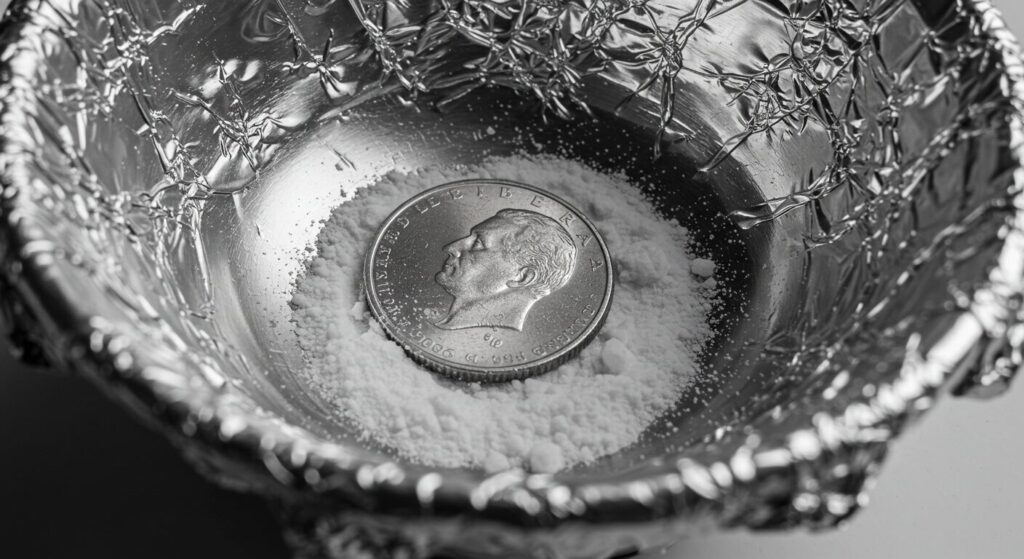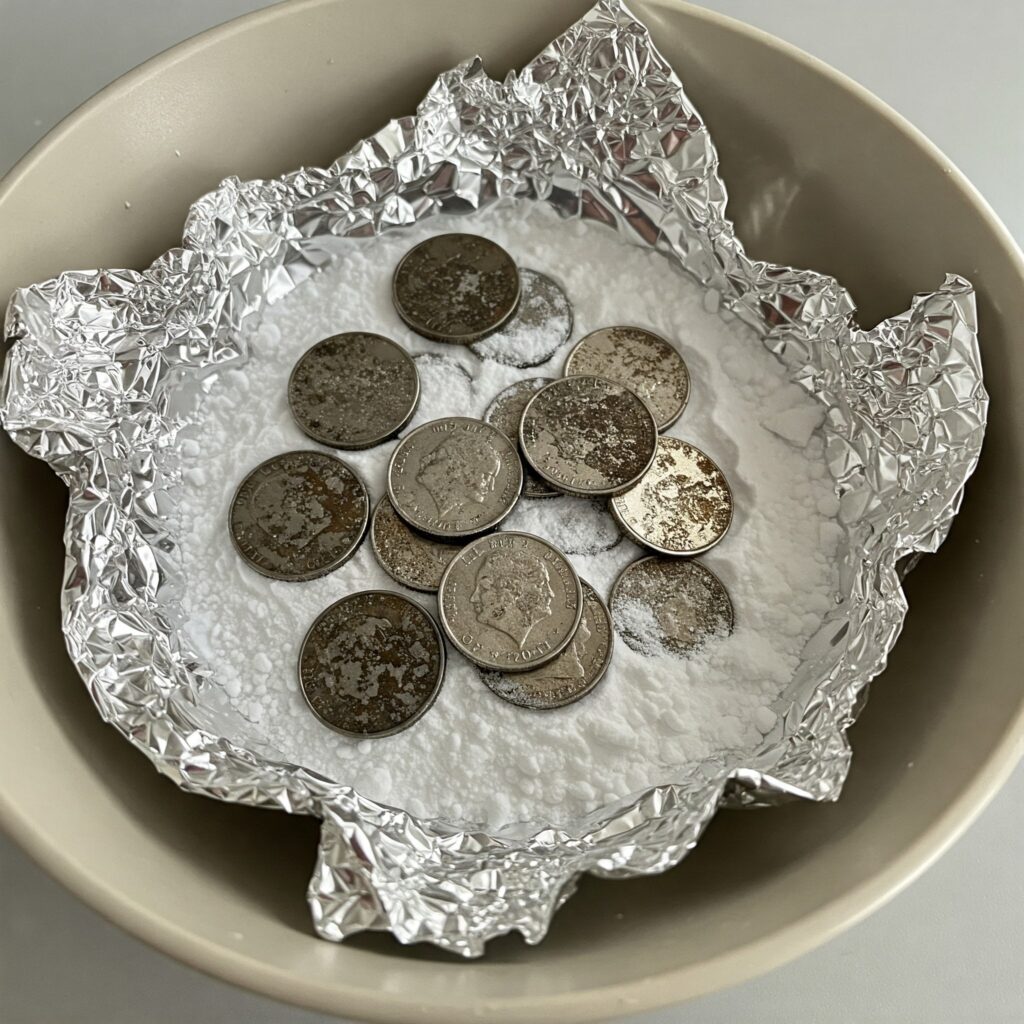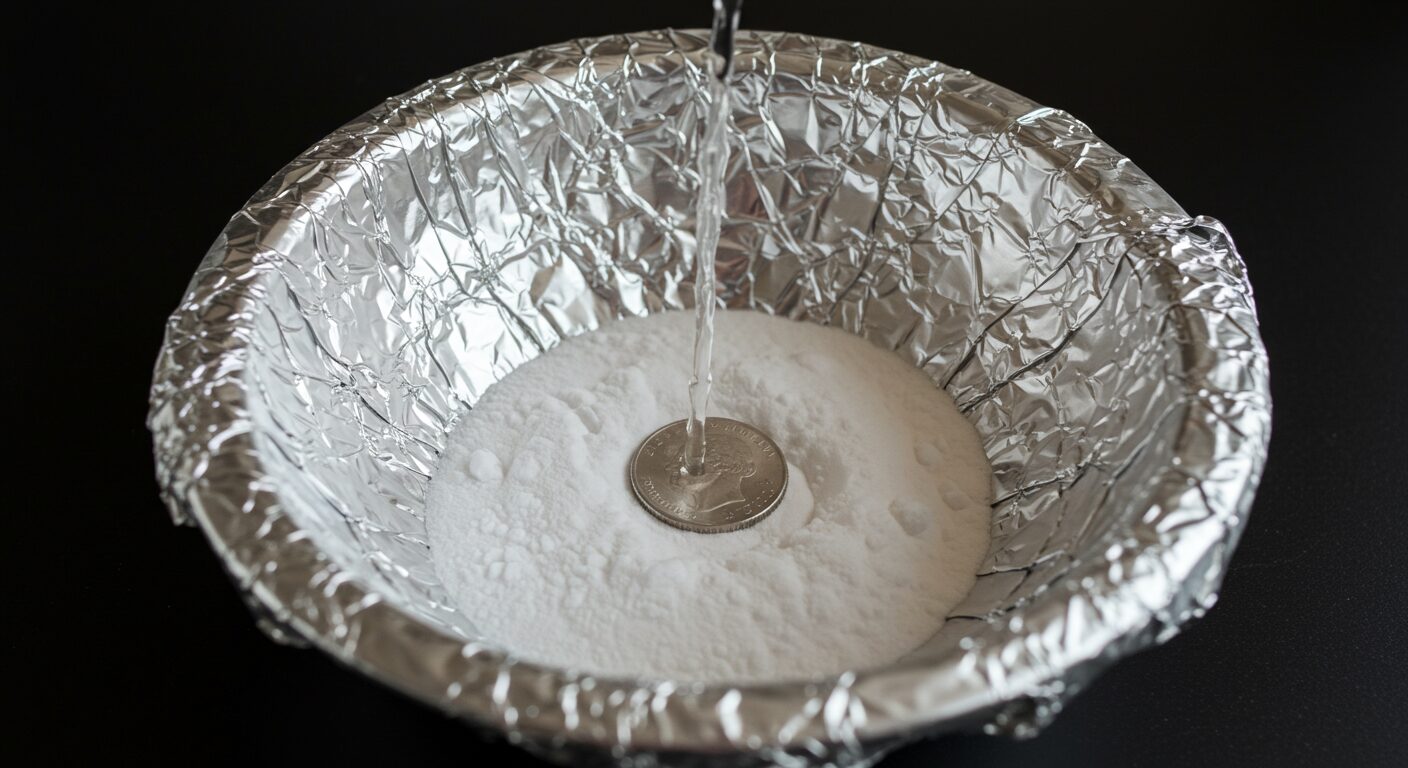How to Clean Silver Coins: the Easy and Cheap Way
There’s nothing like the shine of silver coins, and cleaning them is a great way to help them recover from tarnish or to simply admire its beauty, but there’s a right way to do it, that will not harm the numismatic value of the coin. This guide, inspired by a raising query about How to Clean Silver Coins safely, cheap and easy way to clean those toned or antiques silver pieces at home.
Understanding Silver Tarnish
Tarnishing is nothing but a natural phenomenon where silver reacts with sulfur in the air to form a layer of silver sulfide. This layer looks like a flat, dark film on top of the silver. Some coin collectors like the patina on old coins, while others like the clean, shiny look of silver.
Materials You’ll Need
This technique only needs some simple, everyday things:
- Aluminum Foil: Square big enough to cover the bottom of the bowl.
- Bowl: Use a nonreactive bowl (glass or plastic is best).
- Sodium Bicarbonate: a traditional in-home cleaning solution.
- Hot Water: Water of a temperature warm but not boiling water

Step-by-Step Cleaning Process (learn how to clean silver coins)
Preparation is Key: Start by lining the bowl with aluminium foil from the INSIDE! Make sure the foil extends up onto the bottom. The aluminum will be important to the chemical reaction that dissolves the tarnish.
Making the Cleaning Solution: Add a large amount (3-6 tbs) of baking soda to the bowl on the aluminum foil. Qty would change according to the size of the bowl and how many coins you want to clean. Lay the silver coins right on top of the baking soda. Make sure the coins touch the aluminum foil.
Starting the Response: Pour hot water into the bowl slowly in such a way that all the coins are covered in water. Add a little more baking soda over the coins. You should notice some bubbling or fizzing – these are signs the chemical reaction is occurring.
Mild Tarnish: Let the coins soak in the solution for a few minutes. The hot water and baking soda, along with the aluminum foil will do its thing by loosening the tarnish. You may lightly rub a small amount of the baking soda paste on the surface of the coin with your fingers to work out any stubborn tarnish. Don’t use anything abrasive to clean it, because abrasive materials will scratch your silver.
Rinsing & Drying: When you are happy with the result (could be between 15 seconds and several minutes), remove the coins carefully and rinse again, this time in clean water. Lightly pat coins dry with a soft lint free cloth. Because you don’t want water spots, don’t air dry.

Key Factors: Numismatic Value
Notice towards the beginning that the guy speaking mentions something quite important: DO NOT clean Canadian silver coins with significant numismatic value. Cleaned coins tend to lose most of their value, as collectors favour coins in their original (uncleaned) condition. Toning or the patina look is thought to be attractive on older coins and is part of the history. This cleaning technique is most appropriate for bullion silver (such as silver bars or rounds) or “junk silver”—coins with content-based value, rather than collectibility.
Why This Works: The Science of It
This cleaning process is based on a reaction known as “ion exchange”. Tarnish, which is a silver sulfide, in a baking soda/hot water solution next to aluminum will “spill” over onto the receptive aluminum. In doing so, the silver tarnish has been successfully transferred from the silver coin to the aluminum foil and the silver is now clean.
Other Curring “Clean” Technologies – A Brief Overview
Although the above method should be safe for junk silver and bullion, other methods suitable for other types of coins exist with their own advantages and disadvantages:
Commercial Silver Cleaners: These can easily be procured, however, they are abrasive and can ruin the finish of coins if not used correctly. As always, follow the manufacturer’s instructions carefully.
Professional Cleaning: If the coin has value, you should consider having it professionally graded or conserved. They have the knowledge and equipment to clean coins safely.
Conclusion
It is a simple, rewarding task to clean silver coins and bring out their natural shine. But like all speculation, there are risks, and when it comes to numismatic value it helps to know what they are. The textural Some Junk Silver for Scrubbin’ How-to I just gave you is based on the Silver Dragons’ video and provides a safe, low-budget method for cleaning up bullion or junk silver. Remember, using another persons collection without any permission is theft, so always be careful and when in doubt, contact a professional.

